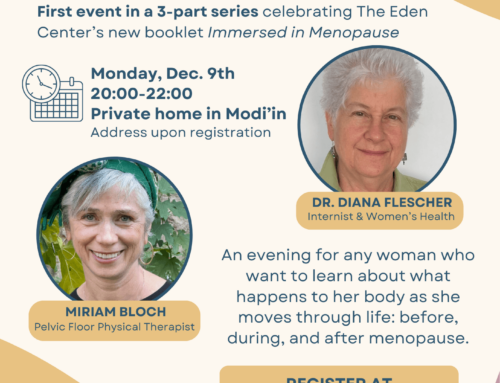
Photo Credit: Reproductive Health Supplies
With each of my two children I faced a 4-month postpartum conundrum: What birth control should I use? There are methods I consider and methods I 100% cancel out. I always half-consider the birth control pill, and until very recently I was taking the mini-pill while nursing my 6-month-old daughter. Thank Gd I had no adverse side effects, but I did not like the idea of putting synthetic hormones into my body. Plus, our nursing relationship is coming to an end and I knew I did not want to go on a combined pill. I considered the copper IUD, which I had for 8 months after my son was born. But the thought of creating an inflammation in my body did not sit well with me either.
A few years ago I sought the counsel of a wise and learned Rabbanit. She told me that choosing a method is choosing the best of all poisons. I appreciated her ruthless honesty, but this has always bothered me. I’ve made sense of it as such: If my husband and I are going to prevent pregnancy which is not a “natural” phenomena according to how Hashem created the world, then yes, I will have to choose the best of all poisons. That is until I went to be fitted for a diaphragm.
I would never have considered the diaphragm after having given birth to my son; I suffered from major tearing from his birth and could barely walk for 3 weeks. Even having completely healed 3 months post-partum, I wanted to veer my attention away from my vagina as much as possible. Plus, I was exhausted and overwhelmed as a new mom. The last thing I wanted was to insert something inside my vagina every time my husband and I wanted to have sex. Anything that required “planning” was out of the question.
To be honest though, it was more the discomfort I felt in my own female body that made the elusive diaphragm a non-option. But then I gave birth 6 months ago to my daughter non-medicated and with zero stitches. Not only did I feel fine, I felt amazing after giving birth. I was completely empowered. And so, after being on the mini pill for a few months I decided to give the diaphragm a go.
The thing with the diaphragm is that it is somewhat of an experience. Unlike the pill or an IUD which requires a few minutes of your time and you are ready to roll, one needs to be fitted properly for a diaphragm. If done properly, the fitting is a 1-2-hour appointment where the diaphragm practitioner (I made up this term and not all “fitters” are practitioners) does an intake of your medical history, a pelvic floor examination, and then teaches you how to properly insert and take out your diaphragm. It requires patience, a willingness to explore your vagina (you need to make sure it is inserted right) and, for me at least, a lot of self-love and non-judgement.
I was blessed to be referred to the most incredible diaphragm “fitter” who is an internal medicine doctor and a specialist in women’s health — Dr. Diana Flescher. First, she asked me about my period health and history in a way no gynecologist or doctor ever has (I have birthed two children and been married for a decade!)* I had to ask my mom what age I got my period! We explored why I am still suffering from bouts of acne in my early 30’s. We discussed that year post- going off the pill (which I was put on for my skin in high school) where I had no period at all.
But the revelation for me was the actual fitting. One landmark to ensure the diaphragm is fitted properly each time is to make sure it is covering my cervix. I had no idea where my cervix was located theoretically, and I now had to find it myself. Have you ever touched your cervix? It feels like the tip of your nose. Hard but slightly flexible. And guess what? It is like your nose! Meaning my vagina is just as much a part of me as my ears or nose. This was and continues to be revelatory.
And then there was the squatting to take out the diaphragm out which Dr. Flescher told me to do the first couple of times because it helps. When I bear down, I will be able to find the diaphragm and take it out more easily. Squatting while putting my fingers into my vagina, all the way up to the cervix?? This was almost too much for me to bear (no pun intended). But with lots of patience and guidance from Dr. Flescher and a willingness to “let go,” I did it. The squatting helped. And it was so cool to feel what “bearing down” means in my body.
What was I afraid of? Six weeks after my beautiful baby girl was born my gynecologist wrote out a prescription for the mini pill as if, of course, the pill is the method I would use. But I cannot help thinking about the many, many women who do not know what a diaphragm is or that it is a viable method of birth control, that when used properly with spermicide, is just as effective as the copper IUD. I mean, why would they? My gynecologist laughed when I asked him about it as if this is some age-old, ineffective thing.
The diaphragm is not a poison, to me at least. It has no side effects. But more than that, it can be an opportunity for deep bodily self-knowledge and discovery. I do not think the diaphragm is for every woman and couple, and certainly not necessarily right for all stages of a women’s life cycle. But you do need to know that it is an option and maybe one worth exploring.
* I recognize that this is probably not the case for couples dealing and suffering with infertility or woman with more overt health issues (such as PCOS).







Leave A Comment